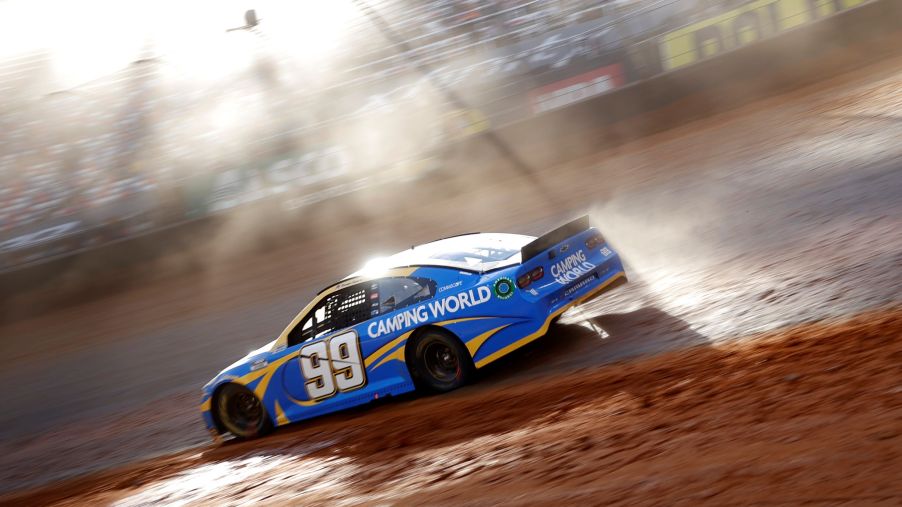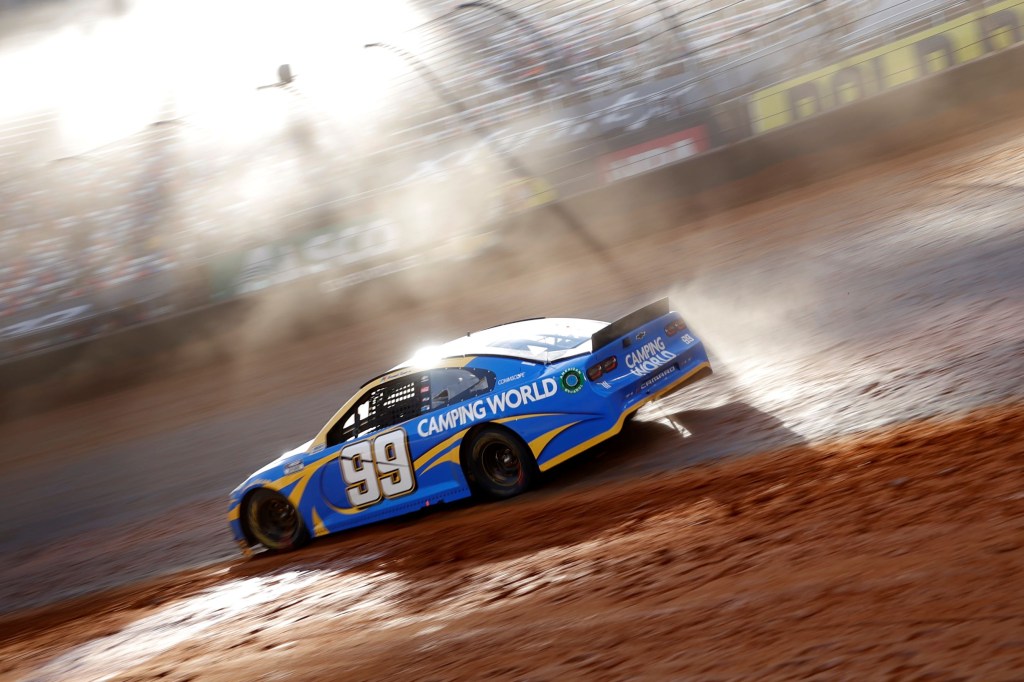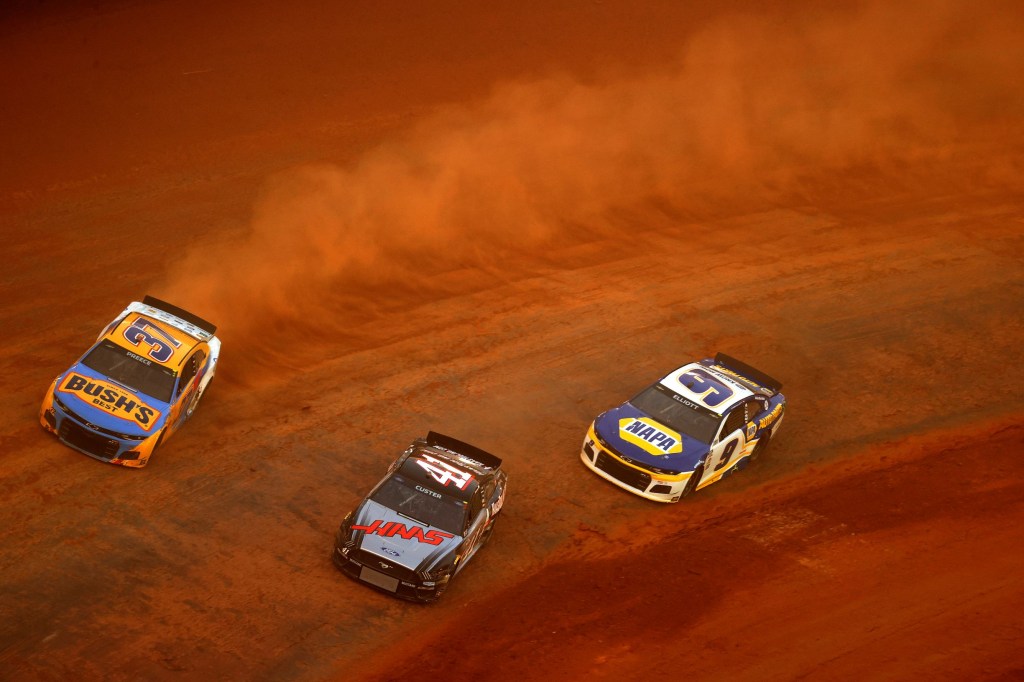
NASCAR Will Keep Playing and Racing in the Dirt in 2022
After the temporary shift to virtual racing, NASCAR returned to a full IRL event schedule for 2021. And it’s a season that’s in some ways contradictory. On the one hand, it’s the last season before the introduction of the ‘Next-Gen’ racer. But it’s also a season that saw a NASCAR race at a dedicated dirt track. And it’s a race that’s coming back next year.
Bristol Motor Speedway became a dirt track to host a special NASCAR race
Before NASCAR was officially established, races at dirt tracks were the rule, rather than the exception, Speed Sport reports. And before there was a Daytona 500, racers slid around on the sand. However, since 1970 stock cars have exclusively raced on paved courses, The Drive reports.

That changed over the weekend of March 27-28, 2021, when NASCAR once again held a dirt track race, Autoweek reports. The race took place at Bristol Motor Speedway in Tennessee, and it wasn’t at some temporary off-to-the-side course. Bristol Motor Speedway’s main paved track became the dirt course, The Drive reports. And it wasn’t easy.
Bristol has played host to other NASCAR-related dirt track races before, but never a full-on NASCAR race. Luckily, past experiences and modern tech helped simplify things a bit this time. Still, the process of converting the paved oval took three months, roughly 30,000 tons of specially-chosen dirt, clay, and lime, and GPS-equipped equipment, Autoweek reports.
Considering how much effort it took to set up a dirt race track at Bristol, why didn’t NASCAR just run a paved-course event? In short, fun. Even before the pandemic, NASCAR was losing viewers and attendees. Going back to dirt was an experiment to try and “inject a sense of novelty and energy” into the sport, Autoweek explains.
Did it work? Well, yes, but not without some teething issues.
The NASCAR dirt race “was an absolute mess,” Road & Track says, but it’s not going away
Part of the reason NASCAR chose the Bristol Motor Speedway for the 2021 dirt race was because of the track’s experience. However, even all that prep-work couldn’t overcome nature and the laws of physics.
To help the stock cars find purchase on the dirt surface, Goodyear provided special knobby tires, Hagerty reports. However, during practice on March 27th, the racers found the tires wore down faster than expected. So much so that NASCAR had to change some rules just to make the race feasible, Autoweek reports.
Then, on Saturday, March 28th, NASCAR delayed the dirt race due to rain. After it stopped, the race organizers sent in specialized equipment to try and pack the dirt down. And the plan was to let the NASCAR Trucks try the dirt track out first. That lasted all of one lap, which was how long it took for every windscreen to get caked with mud, Road & Track reports. That meant more delays.
Sunday, March 29th saw even more rain, so NASCAR delayed the races until Monday, The Drive reports. And when the action finally started, it “was a catastrophe,” R&T reports. A safety truck plowed into a parked race truck, mud caused some early overheating issues, and once the track got dry, the dust severely cut down on visibility. And, naturally, there were a lot of crashes.
In short, the first NASCAR dirt race in 51 years could have gone smoother. But in between the chaos, there was some genuinely exciting racing, R&T reports. And the organizers are getting a second chance to get it right. That’s because the Bristol dirt track is back on the schedule for 2022, R&T reports.
What’s going to change for 2022?
Admittedly, there’s been some pushback about the NASCAR dirt track race.
Racing veteran Richard Petty compared it to “‘taking a professional football team and going back to play at a high school field,'” Autoweek reports. Essentially, he was worried the race was too much of a throwback to NASCAR’s less professional past. But he also acknowledged that it could be an opportunity to grow the fanbase, Hagerty reports.
There’s also the issue of the Next-Gen NASCAR machines. They’re significantly different than the current stock cars; the new independent rear suspension is just one change. And while Goodyear provided knobby tires for 2021, the new cars’ different wheels could complicate that, Autoweek reports. Though to be fair, rally cars have independent suspension, and they have no problems handling dirt.

Still, the fact that NASCAR is trying to make dirt racing work is applaudable, Autoweek muses. It didn’t work right out of the gate, but it’s something different and exciting, and it has potential. Plus, maybe if more Americans see race cars sliding around on dirt, we could see increased interest in rallying.
Follow more updates from MotorBiscuit on our Facebook page.


